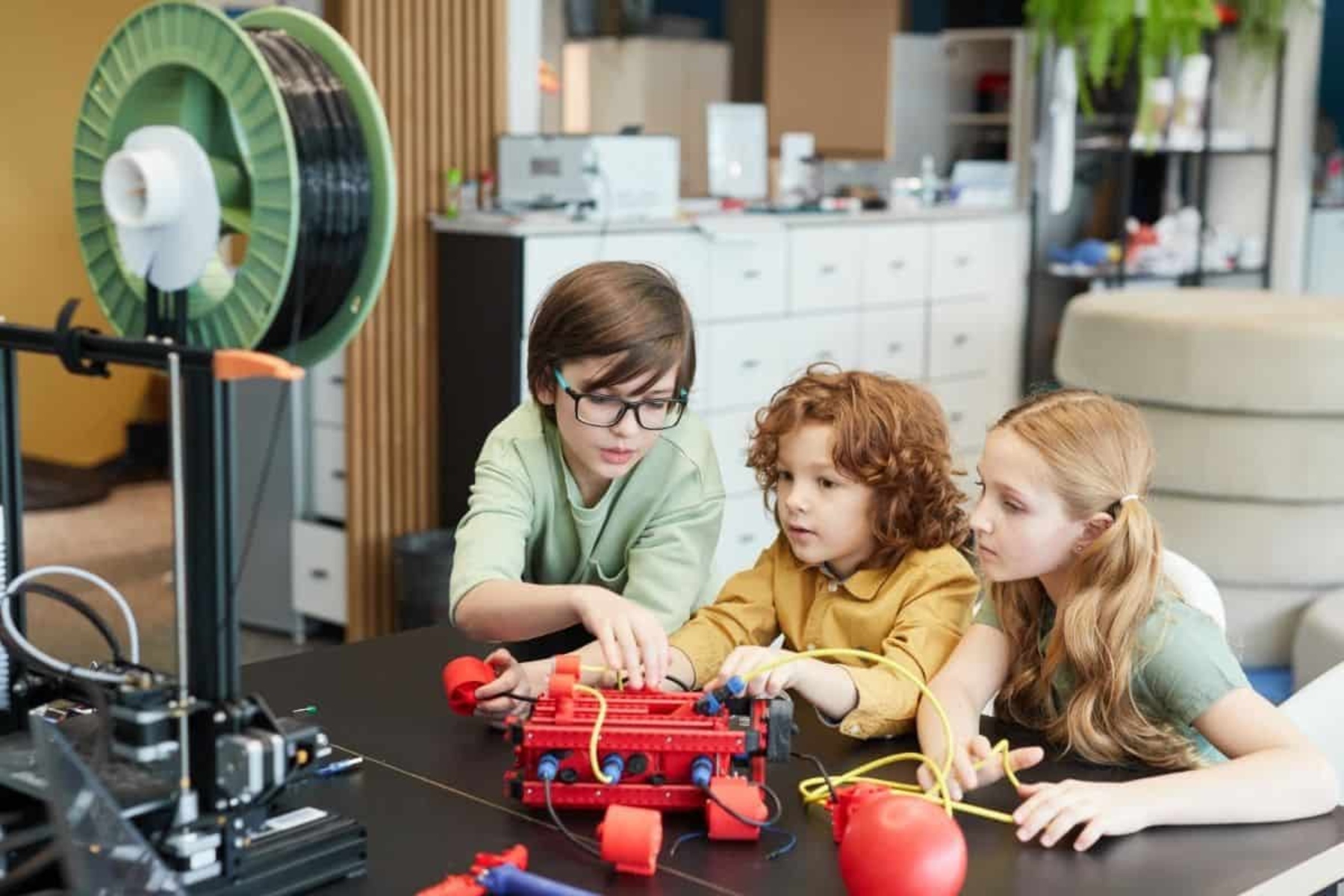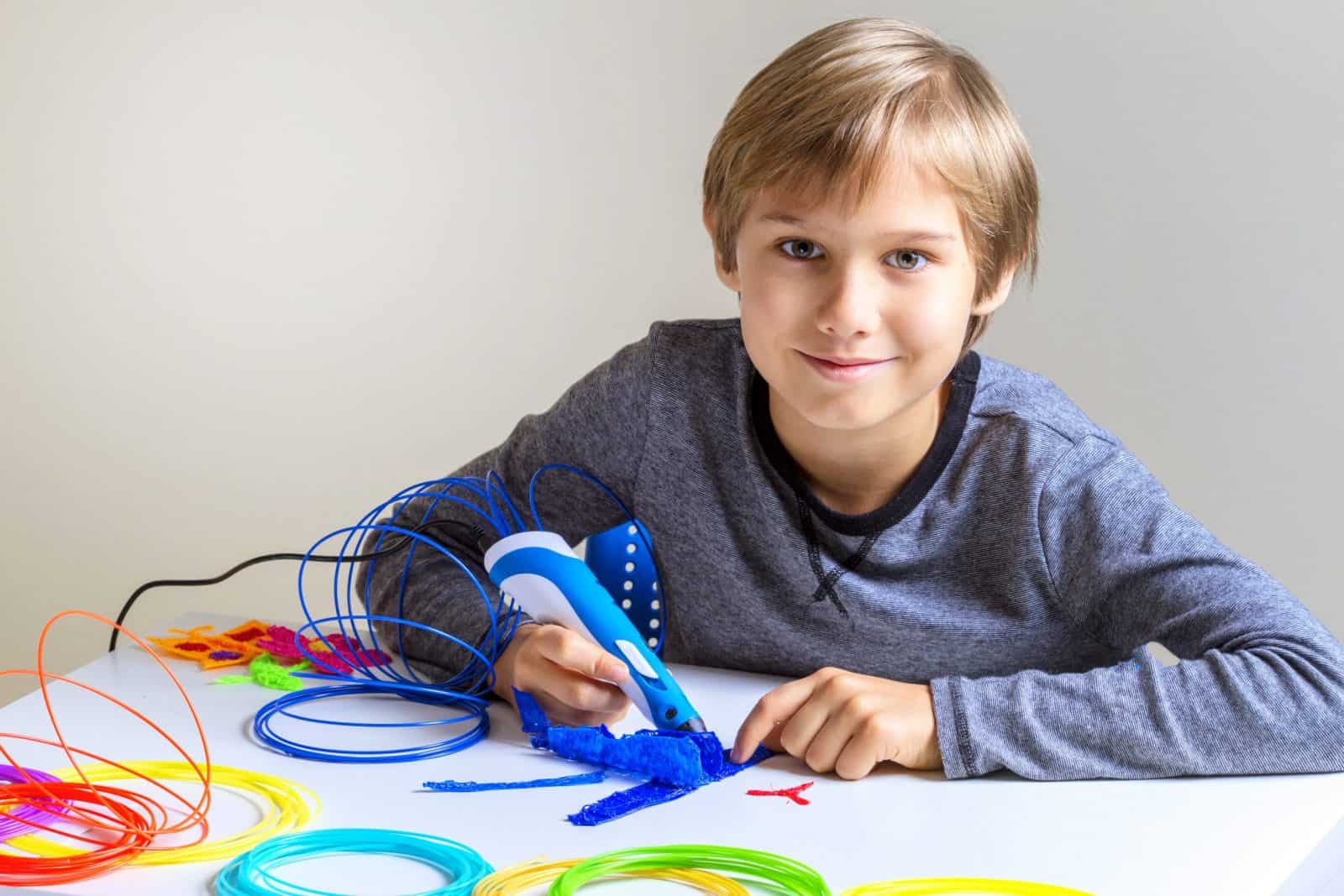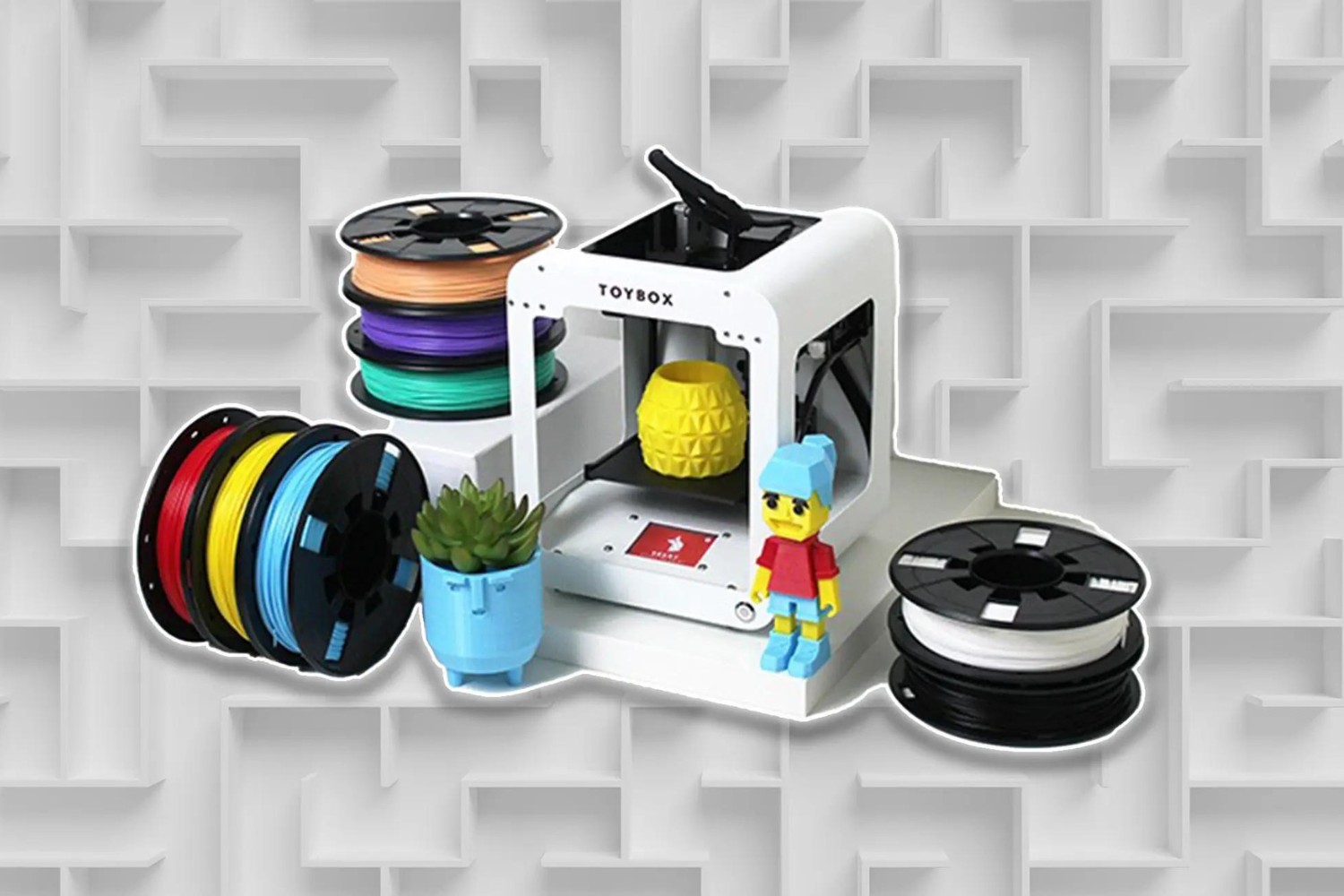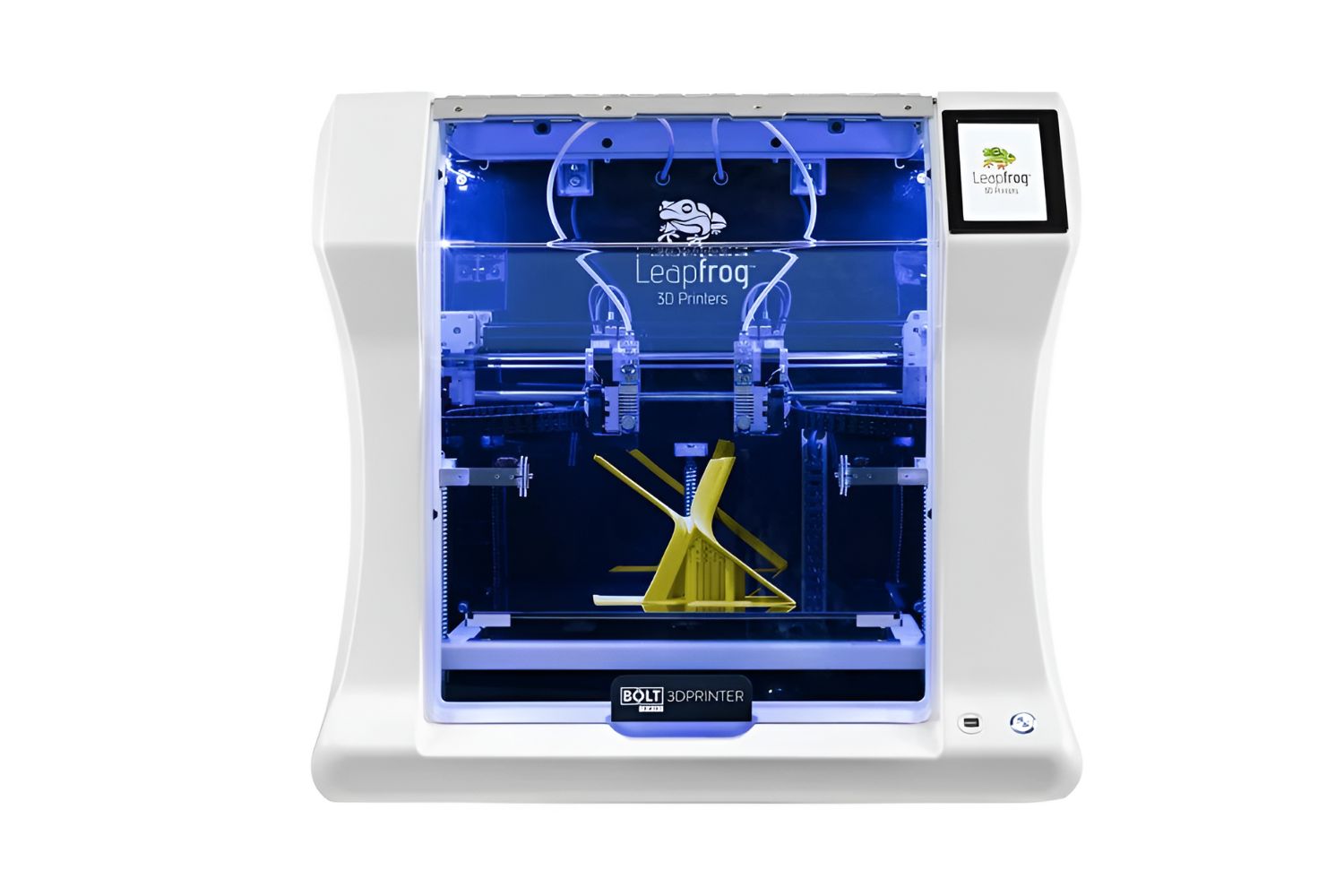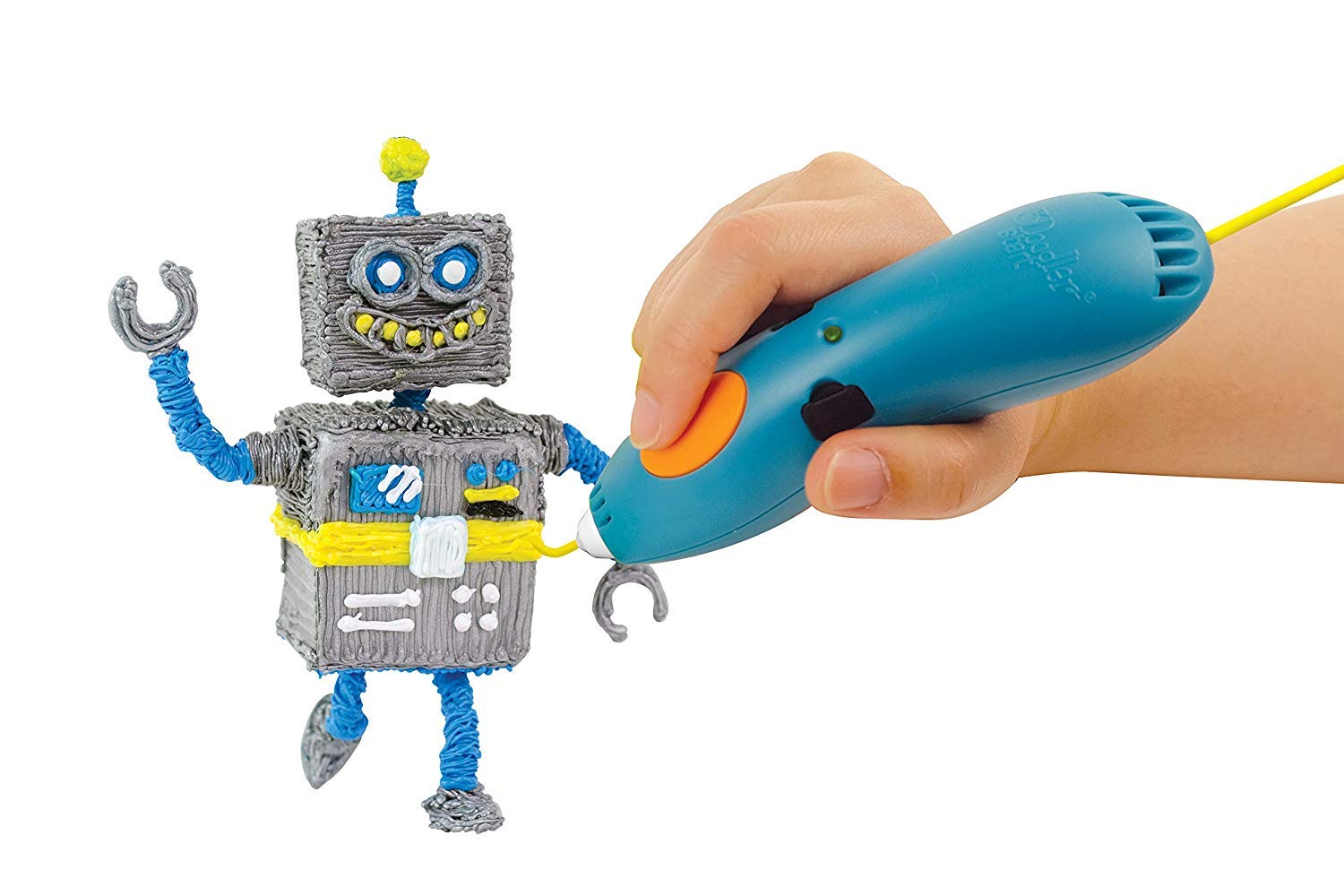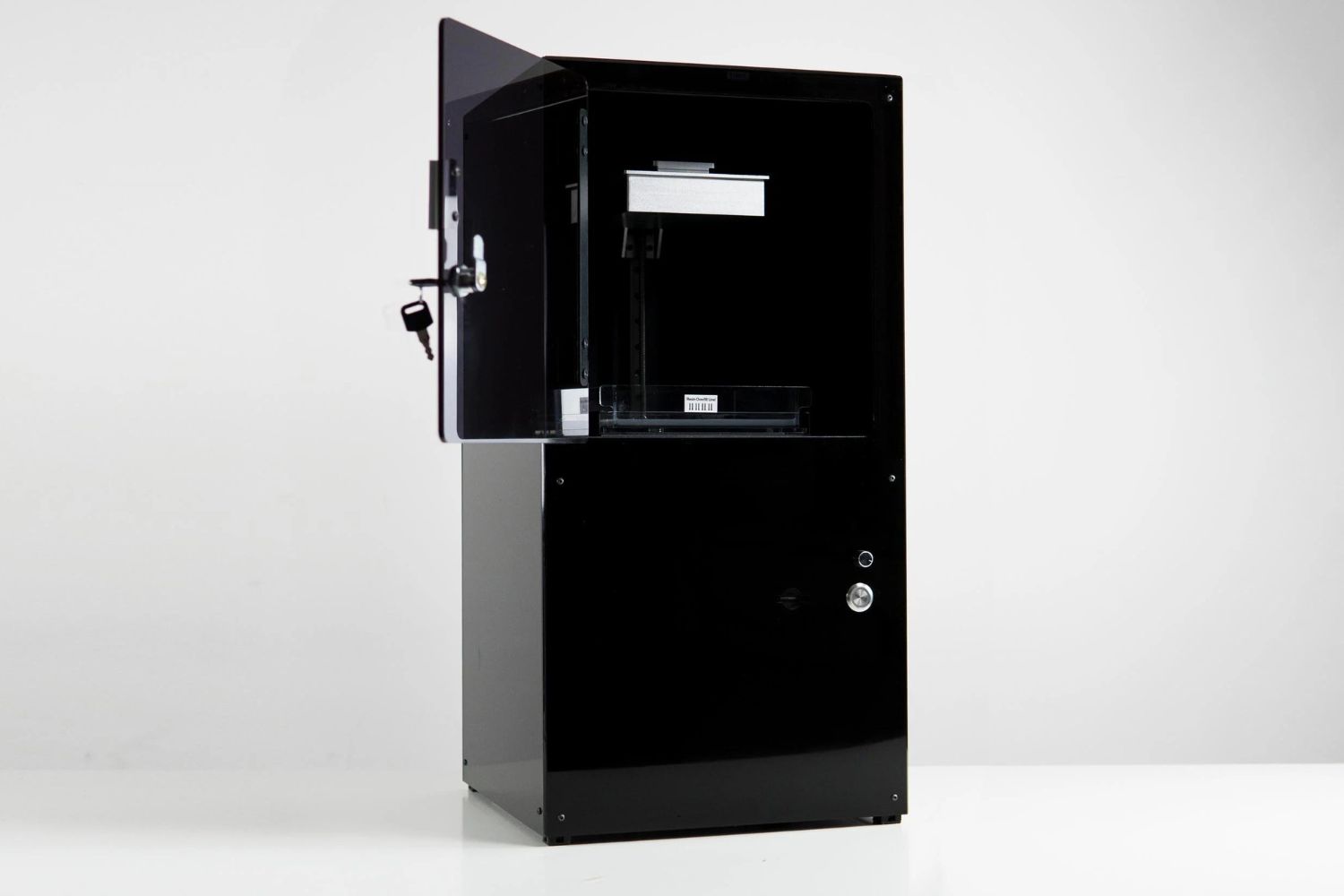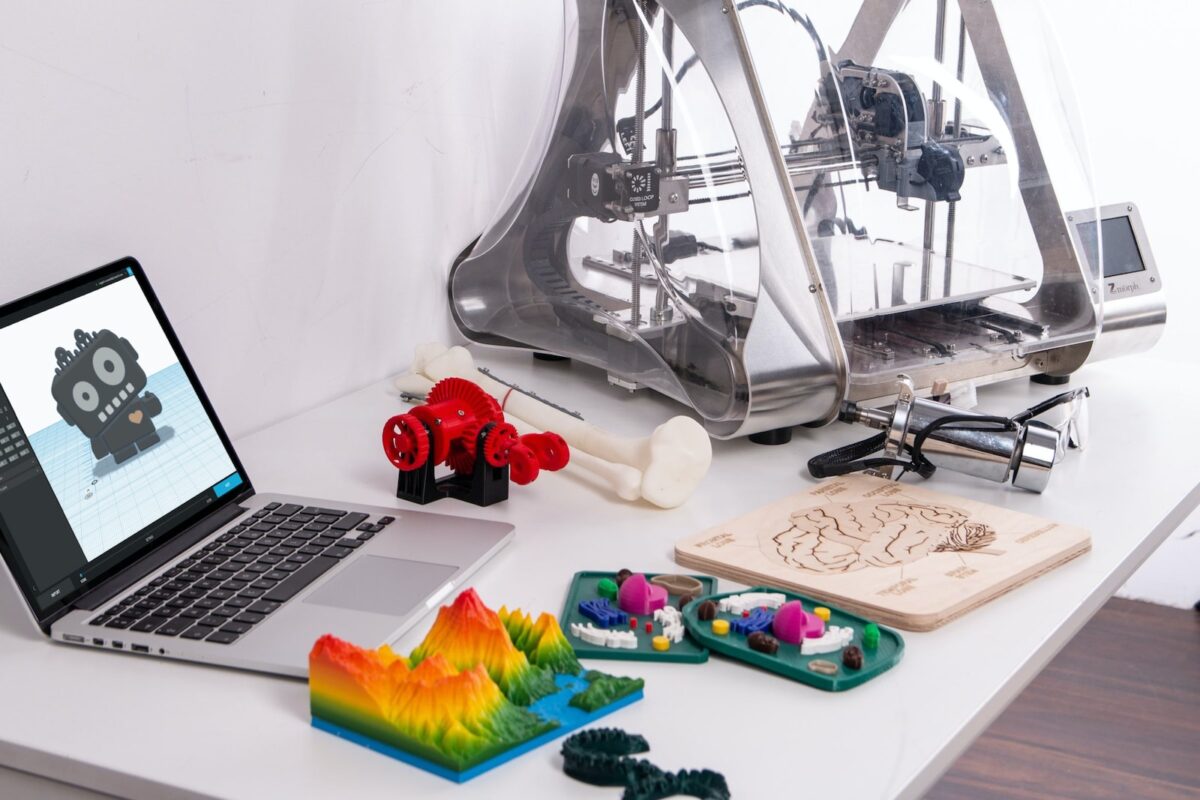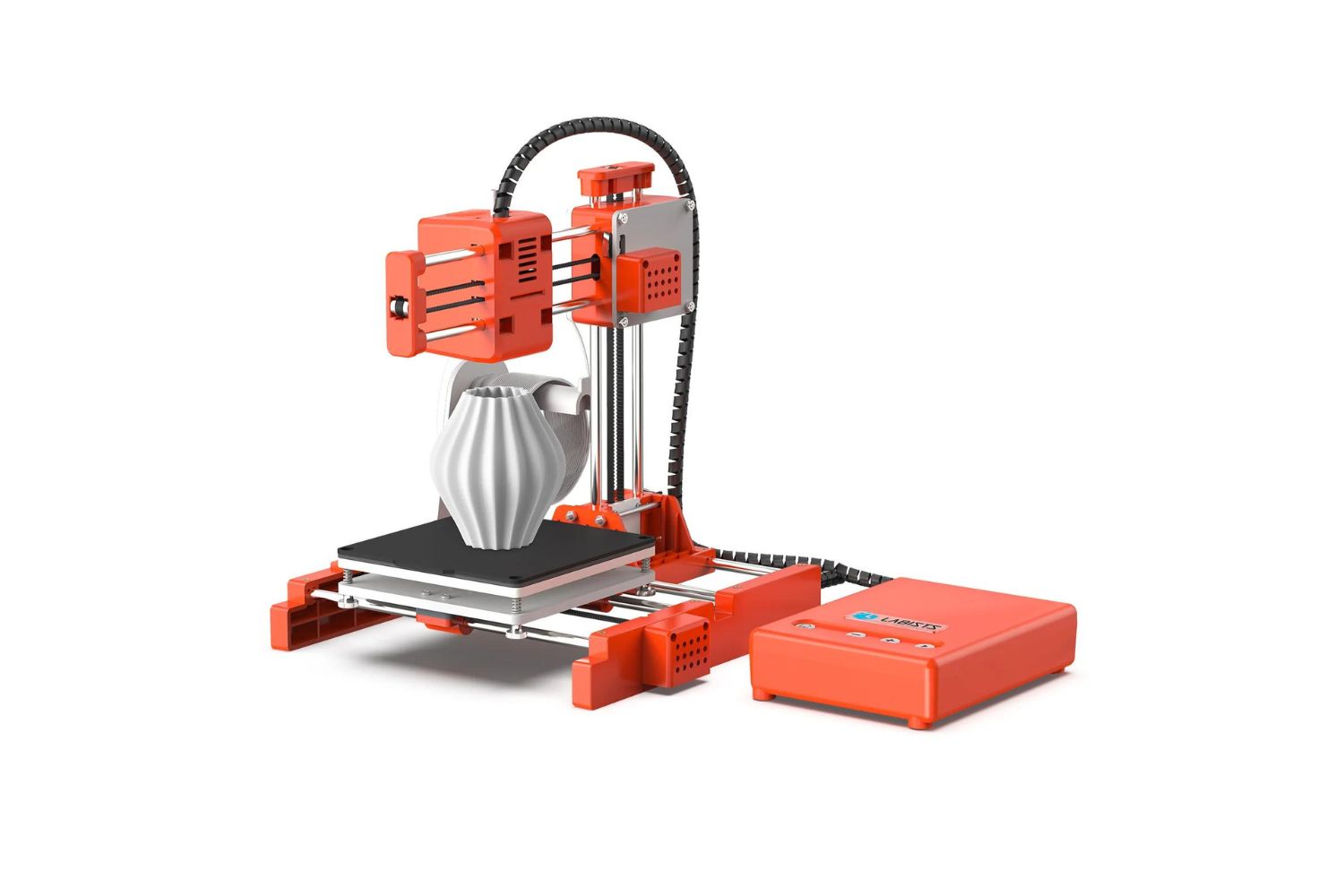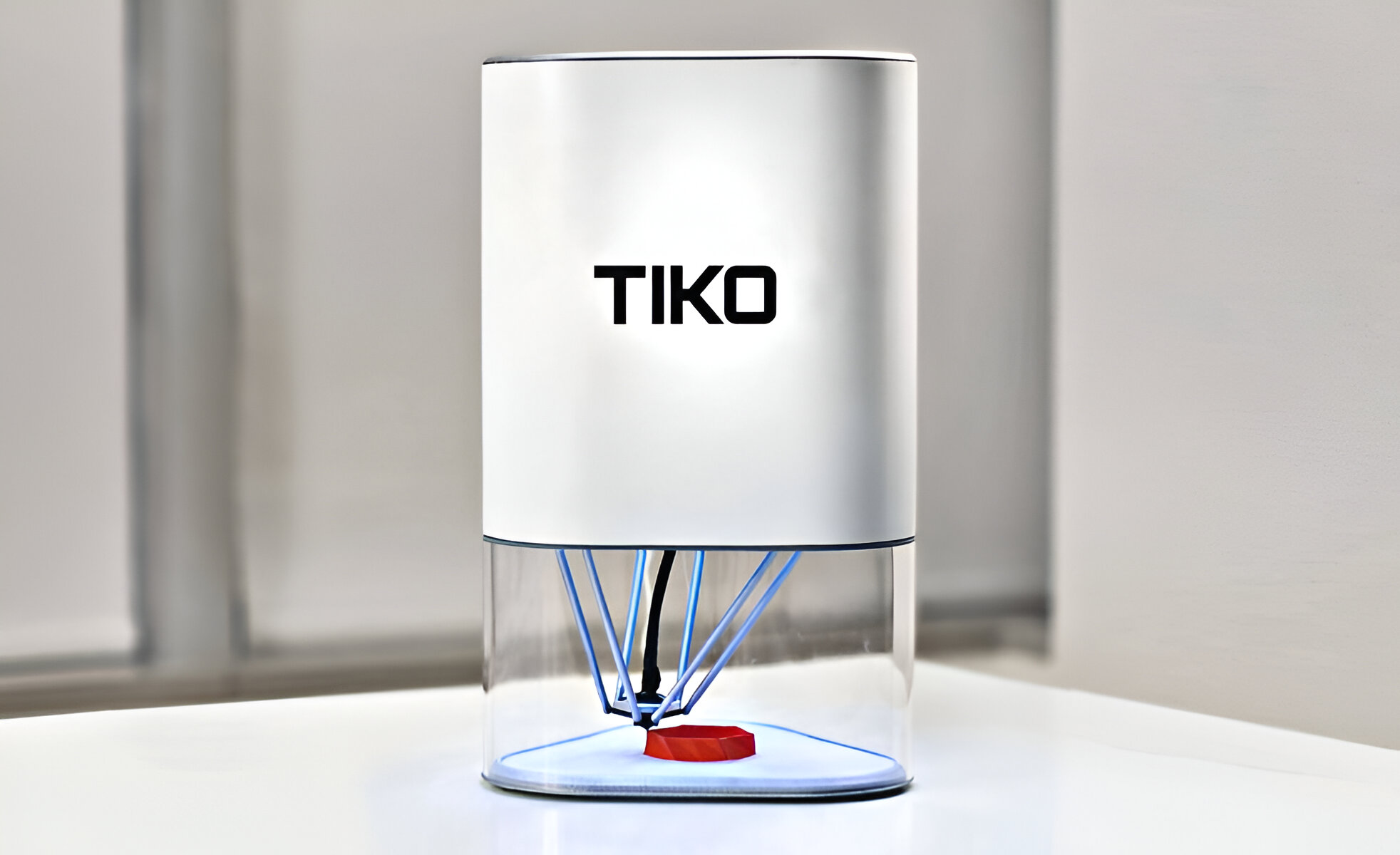Introduction
Welcome to the world of 3D printing for kids! With technological advancements, children now have the opportunity to unleash their creativity and bring their imaginations to life by using 3D printers. This groundbreaking technology has revolutionized the way we create and manufacture objects, and it is now accessible to kids of all ages.
3D printing allows children to design and build their own three-dimensional objects by layering materials to form a solid structure. By fostering innovation and problem-solving skills, 3D printing empowers kids to explore and experiment with endless possibilities.
Not only does 3D printing provide a fun and interactive experience, but it also offers numerous educational benefits. Through hands-on engagement, children develop critical thinking abilities, spatial awareness, and understanding of complex concepts such as geometry and engineering.
In this article, we will delve deeper into the world of 3D printing for kids, exploring its functionality, the various projects kids can create, and the safety considerations parents need to keep in mind. So, let’s embark on a journey of imagination, innovation, and endless creativity!
What is 3D Printing?
3D printing, also known as additive manufacturing, is a cutting-edge technology that allows the creation of three-dimensional objects by layering material on top of each other. Unlike traditional manufacturing methods that involve subtracting or molding materials, 3D printing builds objects layer by layer, based on a digital file or design.
The process of 3D printing starts with a 3D model, which can be created using computer-aided design (CAD) software or obtained from online repositories. The digital model is then converted into instructions that the 3D printer can interpret. These instructions guide the printer to deposit or melt materials, such as plastic filament or resin, layer by layer to form the final object.
One of the key advantages of 3D printing is its versatility. It can be used to manufacture a wide array of objects, ranging from simple toys and prototypes to intricate tools and medical implants. This technology has been widely adopted in various industries, including aerospace, healthcare, and automotive, due to its ability to create complex geometries and customized designs.
There are several methods of 3D printing, including fused deposition modeling (FDM), stereolithography (SLA), and selective laser sintering (SLS). Each method involves different processes and materials, but they all aim to achieve the same outcome: transforming virtual designs into tangible objects.
Over the years, 3D printing has become more accessible and affordable, making it increasingly popular among hobbyists, educators, and, of course, kids. By introducing children to this technology, we encourage their curiosity, problem-solving skills, and creativity, while providing them with a hands-on experience in the world of manufacturing and engineering.
Benefits of 3D Printing for Kids
Introducing children to the world of 3D printing comes with a range of exciting benefits that can help nurture their growth and development. Here are some of the key advantages of 3D printing for kids:
1. Encourages Creativity: 3D printing allows kids to bring their imagination to life. They can design and create custom objects, toys, and models, fostering their creativity and providing a sense of accomplishment.
2. Hands-On Learning: 3D printing offers a practical and engaging way for kids to learn about technology, design, and problem-solving. They learn by doing, gaining valuable skills in science, technology, engineering, and mathematics (STEM).
3. Enhances Critical Thinking: When designing a 3D model, children must think critically and consider factors such as size, structure, and functionality. They learn to plan and problem-solve, developing logical and analytical thinking skills.
4. Promotes Spatial Awareness: 3D printing requires an understanding of three-dimensional space. Kids learn about dimensions, angles, and proportions, enhancing their spatial awareness and visualization abilities.
5. Cultivates Entrepreneurial Spirit: 3D printing encourages kids to think entrepreneurially by designing and creating products that can be sold or shared with others. This fosters business acumen, marketing skills, and a sense of initiative.
6. Customization and Personalization: With 3D printing, kids can create personalized objects tailored to their preferences or specific needs. Whether it’s a custom-designed toy or a functional tool, this technology enables children to have a hands-on role in the creation process.
7. Teaches Resourcefulness: 3D printing encourages kids to think outside the box and find innovative solutions to problems. They learn to optimize designs, use materials wisely, and explore sustainability concepts.
8. Boosts Confidence: Successfully designing and printing a 3D object instills a sense of achievement in kids, boosting their confidence and motivation to tackle new challenges.
9. Collaborative Learning: 3D printing can be a group activity, fostering teamwork and collaboration. Kids can work together, brainstorm ideas, and bring their collective visions to life.
10. Prepares for the Future: As 3D printing continues to advance, it becomes increasingly integrated into various industries. By introducing kids to this technology early on, we equip them with valuable skills that can be advantageous in future academic and professional endeavors.
The benefits of 3D printing go beyond just creating tangible objects. It opens up a world of opportunities for exploration, learning, and personal growth. By embracing this technology, children can develop essential skills and unlock their creative potential in exciting and innovative ways.
How Does 3D Printing Work?
Although 3D printing may seem like a complex process, it can be broken down into a few key steps that explain how it works:
1. Designing the Model: The first step in 3D printing is creating a digital model of the object you want to create. This can be done using computer-aided design (CAD) software or by downloading existing 3D models from online repositories.
2. Slicing: Once the digital model is ready, a process called slicing takes place. Slicing involves dividing the model into thin cross-sectional layers, typically ranging from 0.1 to 0.3 millimeters in thickness. This step prepares the model to be printed layer by layer.
3. Preparation of the Printer: Before printing, the 3D printer needs to be prepared. This involves ensuring the printer is calibrated correctly, selecting the appropriate print settings, and loading the chosen printing material, such as plastic filament or resin.
4. Printing the Object: Once the printer is ready, the actual printing process begins. The printer’s nozzle or printhead moves along the X, Y, and Z axes and deposits the printing material layer by layer, following the instructions provided by the sliced model. The material is heated or melted, and once deposited, it quickly solidifies to form a solid object.
5. Support Structures: In some cases, if the design requires overhanging features or complex geometries, support structures may be needed. These structures provide temporary support during the printing process and are removed once the object is complete.
6. Post-Processing: After the object has been printed, there may be some post-processing required. This can include removing any support structures, sanding or smoothing rough surfaces, and adding finishing touches, such as painting or polishing.
It’s important to note that the specific steps and processes involved in 3D printing can vary depending on the type of printer and printing technology being used. Some printers use a laser to solidify resin, while others use melted plastic filament. Nevertheless, the basic concept of building objects layer by layer remains consistent across different 3D printing methods.
With advancements in technology, 3D printing has become more accessible and user-friendly. There are now user-friendly software and affordable desktop printers available that make it easier for individuals, including kids, to engage in 3D printing and unleash their creativity.
Different Types of 3D Printers for Kids
When it comes to choosing a 3D printer for kids, there are several options available. Each type of printer has its own advantages and considerations. Here are three common types of 3D printers suitable for kids:
1. Fused Deposition Modeling (FDM) Printers: FDM printers are one of the most popular and affordable options for kids. These printers work by melting a plastic filament and depositing it layer by layer to form the object. FDM printers are relatively easy to use and provide a good balance between cost and print quality. They allow kids to create various objects, toys, and prototypes.
2. Stereolithography (SLA) Printers: SLA printers use a UV laser and a liquid resin to create objects. The laser selectively solidifies the resin layer by layer based on the digital design. SLA printers offer high-resolution and detailed printing, making them suitable for intricate objects with fine features. However, they can be more expensive and require additional safety precautions due to the use of liquid resins.
3. Delta Printers: Delta printers have three vertical columns that control the movement of the printhead. These printers are known for their fast printing speed and ability to print tall objects. Delta printers are great for printing large-scale models and artistic creations. However, they may have a steeper learning curve and require more assembly compared to other types of printers.
There are other types of 3D printers available in the market, such as Selective Laser Sintering (SLS) printers and Digital Light Processing (DLP) printers. SLS printers use a laser to fuse powdered materials together, while DLP printers use a projector to cure liquid resin. These types of printers are more advanced and typically used in industrial settings.
When selecting a 3D printer for kids, it’s important to consider factors such as ease of use, print quality, safety features, and budget. It’s also beneficial to choose a printer that has good customer support and a community of users, as this can provide additional resources and troubleshooting assistance.
Remember, regardless of the type of printer chosen, adult supervision and guidance are essential when kids are using 3D printers to ensure they understand the necessary safety precautions and operate the machines responsibly.
What Can Kids Create with 3D Printing?
The possibilities for kids to create with 3D printing are virtually limitless. This technology allows young innovators to turn their imagination into tangible objects, opening up a world of creativity and exploration. Here are some of the things that kids can create with 3D printing:
1. Toys and Games: Kids can design and print their own custom toys and games, such as action figures, puzzles, board games, and building blocks. This allows them to bring their favorite characters and playtime experiences to life.
2. Decorative Items: With 3D printing, children can design and create decorative items like unique vases, jewelry, keychains, and room decorations. They can add a personal touch to their living space or make thoughtful gifts for family and friends.
3. Functional Tools: Kids can use 3D printing to make functional tools or household items. They can design and print items like pencil holders, phone stands, bookmarks, organizers, and even kitchen gadgets. This promotes problem-solving skills and encourages kids to think about how objects can be useful in their everyday lives.
4. Prototypes and Models: 3D printing is a fantastic tool for creating prototypes and models. Kids can bring their ideas to life by designing and printing models of inventions, architectural structures, scientific concepts, or even replicas of famous landmarks.
5. Artistic Creations: 3D printing can be used as a medium for artistic expression. Kids can explore sculptural design, create unique sculptures, or experiment with innovative art forms. They can combine traditional art techniques with 3D printing to push the boundaries of their creativity.
6. Educational Resources: 3D printing can be utilized to create educational resources that enhance learning. Kids can design and print models of cells, planets, historical artifacts, or animal replicas, bringing their school projects to life and making learning more interactive and engaging.
7. Creative Solutions: 3D printing encourages kids to think outside the box and find creative solutions to challenges. They can design and print objects that solve everyday problems or improve existing products. This fosters critical thinking, innovation, and inventiveness.
8. Customized Accessories: From personalized phone cases to custom-designed headphones, 3D printing enables kids to create unique accessories that reflect their individual style and personality.
By harnessing the power of 3D printing, children can develop their design skills, problem-solving abilities, and attention to detail. It encourages them to think creatively, take risks, and learn from their mistakes. The ability to transform ideas into physical objects empowers kids and instills a sense of pride and accomplishment in their creations.
Popular 3D Printing Projects for Kids
3D printing opens up a world of exciting projects and possibilities for kids to explore. From toys and games to practical items and educational resources, here are some popular 3D printing projects for kids:
1. Customized Figurines: Kids can design and print their own action figures or characters inspired by their favorite movies, books, or video games. They can customize their designs, choosing poses, facial expressions, and accessories.
2. Puzzles and Brain Teasers: 3D printing allows kids to create custom puzzles and brain teasers, challenging themselves and others with unique designs. They can design maze puzzles, twisty puzzles, or even create their own versions of popular brain teasers.
3. Miniature Models: Kids can design and print intricate miniature models of buildings, vehicles, or landscapes. They can delve into architectural design, creating a miniature city or dream house, or bring historical landmarks to life.
4. Customized Jewelry: Using 3D printing, kids can design and print their own jewelry pieces, such as necklaces, bracelets, or earrings. They can experiment with various patterns, shapes, and colors to create unique accessories.
5. Functional Tools and Gadgets: 3D printing allows kids to design and print functional tools, such as phone stands, tablet holders, headphone organizers, or pencil holders. They can create solutions for everyday problems and make their lives more organized and efficient.
6. Robotics and Mechanics: Kids can dive into the world of robotics by designing and printing parts for robotic projects. They can create robot frames, joints, or gears, and explore the mechanics behind their creations.
7. STEM Learning Aids: With 3D printing, kids can design and print models that aid in science, technology, engineering, and mathematics (STEM) learning. They can print models of the solar system, molecular structures, or mathematical concepts to deepen their understanding of these subjects.
8. Artistic Sculptures: 3D printing can be a medium for artistic expression. Kids can design and print unique sculptures, experimenting with shapes, textures, and patterns. They can combine traditional art techniques with 3D printing, exploring their creativity in new and innovative ways.
9. Custom Phone Cases: Kids can design and print their own personalized phone cases, showcasing their favorite designs, characters, or colors. This project allows them to showcase their creativity while protecting their devices.
10. Educational Games: Kids can design and print educational games, such as flashcards, memory games, or math puzzles. They can further enhance these games by incorporating 3D-printed pieces or interactive elements.
These popular 3D printing projects for kids foster imagination, creativity, problem-solving, and hands-on learning. They provide a platform for children to express their ideas, explore their interests, and develop valuable skills in a fun and engaging way.
Safety Considerations for 3D Printing
While 3D printing offers numerous benefits and exciting opportunities for kids, it is important to prioritize safety when engaging in this activity. Here are some essential safety considerations for 3D printing:
1. Equipment Safety: Ensure that the 3D printer is in good working condition and well-maintained. Follow manufacturer guidelines for setup, operation, and maintenance. Keep the printer away from flammable materials or sources of heat.
2. Printer Location: Position the 3D printer in a well-ventilated area to minimize exposure to potentially harmful fumes or particles. Avoid placing the printer in a confined or poorly ventilated space.
3. Materials Safety: Be mindful of the materials used in 3D printing, such as filaments or resins. Some materials may emit hazardous fumes when heated or processed. Read and follow the safety instructions provided by the material manufacturer.
4. Adult Supervision: Ensure that a responsible adult supervises children when they are using the 3D printer. Adult supervision is necessary to guide children through the printing process safely and to address any potential issues that may arise.
5. Heat and Hot Surfaces: The 3D printer’s components, such as the printhead and the print bed, can become very hot during the printing process. Caution children to avoid touching these parts to prevent burns or injuries.
6. Sharp Tools: Some 3D printing projects may require the use of tools for post-processing or removing support structures. Supervise children closely and provide appropriate safety instructions when handling sharp tools.
7. Electrical Safety: Ensure that the 3D printer is connected to a properly grounded electrical outlet. Avoid using damaged cords or overloaded power outlets. Teach children about electrical safety measures and the importance of unplugging the printer when not in use.
8. Design Considerations: Encourage children to design objects with safety in mind. For example, avoid creating objects with small or sharp parts that may pose a choking hazard or injury risk.
9. Education and Training: Prioritize education and training for both adults and children regarding safe 3D printing practices. Familiarize yourself and your child with the specific functions and limitations of your chosen printer.
10. Chemical Safety: Use caution when handling chemicals such as resins or cleaning solvents. Follow instructions on material safety data sheets (MSDS) and ensure that proper ventilation and personal protective equipment (PPE) are used when handling potentially hazardous substances.
By considering these safety measures, parents and educators can ensure that children can enjoy the benefits of 3D printing while minimizing any potential risks. Safety should always be the top priority when engaging in this exciting and innovative activity.
How to Get Started with 3D Printing for Kids
Getting started with 3D printing for kids is an exciting journey that opens up a world of creativity and innovation. Here are some steps to help you embark on this adventure:
1. Research and Choose the Right 3D Printer: Start by researching and selecting a 3D printer that is suitable for kids. Consider factors such as ease of use, safety features, print quality, and budget. Look for models that have user-friendly interfaces and good customer support.
2. Learn the Basics: Familiarize yourself and your child with the basics of 3D printing. Look for online tutorials, videos, and guides to understand the concepts and terminology. This will help you gain confidence and ensure a smoother printing journey.
3. Design Software: Choose a kid-friendly design software or CAD program. There are several options available that offer simplified interfaces and intuitive tools specifically designed for children. Some popular options include Tinkercad, BlocksCAD, or 3D Slash.
4. Start with Simple Designs: Begin by designing and printing simple objects that require fewer complex features. This enables kids to get comfortable with the design process and understand the limitations of the 3D printer.
5. Explore Online Resources: Utilize online resources and repositories that provide pre-made 3D models. Websites like Thingiverse, MyMiniFactory, or Pinshape offer a wide range of ready-to-print designs that can serve as inspiration or be printed directly.
6. Safety Measures: Ensure you have taken all necessary safety measures, as mentioned in the previous section. Educate your child about the importance of safety, including handling the printer and materials responsibly.
7. Collaborate and Learn: Encourage your child to collaborate and learn from others who are involved in 3D printing. Join online communities or local maker spaces where ideas, tips, and troubleshooting support are shared.
8. Encourage Iteration: Emphasize the iterative nature of 3D printing, where designs are refined and improved over time. Teach your child the value of learning from mistakes and experimenting with different settings to achieve better results.
9. Expand Possibilities with Post-Processing: Explore post-processing techniques to enhance the appearance and functionality of the 3D-printed objects. Sanding, painting, or applying surface finishes can bring creations to life and offer additional opportunities for creativity.
10. Promote Continuous Learning: Encourage your child to explore and learn about new design techniques, materials, and advances in 3D printing. Foster their curiosity and inspire them to push their boundaries and take on more complex projects.
Remember, 3D printing is a journey of exploration and learning. Have patience, embrace failures as opportunities for growth, and celebrate the accomplishments along the way. Enjoy the process and watch as your child’s creative ideas come to life in the form of amazing 3D-printed objects.
Conclusion
3D printing presents an incredible opportunity for kids to unleash their creativity, learn valuable skills, and explore the world of innovation and technology. From designing custom toys to creating functional tools and educational resources, 3D printing opens up a world of possibilities for young minds.
By engaging in 3D printing, kids develop critical thinking, problem-solving, and spatial awareness skills. They learn to think creatively, visualize three-dimensional objects, and bring their ideas to life. Moreover, this technology fosters a sense of accomplishment and boosts confidence as children successfully design and print their creations.
However, it is important to prioritize safety throughout the 3D printing journey. Adhering to safety considerations, following manufacturer guidelines, and providing adult supervision ensure that kids can enjoy 3D printing in a safe and responsible manner.
Furthermore, getting started with 3D printing is an exciting and educational process. By choosing the right printer, learning the basics, and exploring design software, kids can embark on a journey of creativity and innovation. With access to online resources, collaboration, and continuous learning, the possibilities for 3D printing projects are limitless.
As children delve into the world of 3D printing, they develop not only technical skills but also qualities like perseverance, problem-solving, and adaptability. They learn to embrace failure as an opportunity for growth and become more confident in their abilities to tackle new challenges.
In conclusion, 3D printing for kids is an engaging and transformative way to nurture their creativity, inspire their curiosity, and equip them with essential skills for the future. By offering hands-on experiences in design, engineering, and manufacturing, 3D printing empowers children to become innovators and makers, shaping the world with their own imaginations. Let’s embark on this exciting journey and watch as the young minds of today become the pioneers of tomorrow’s technological advancements.







